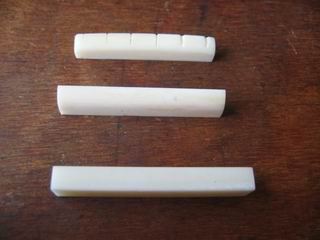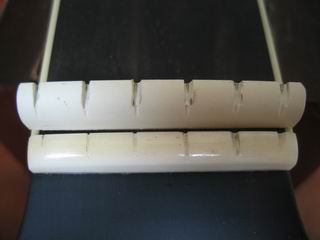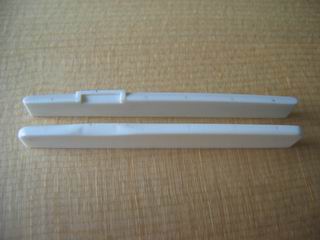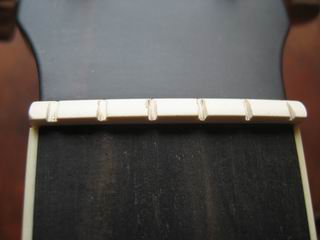
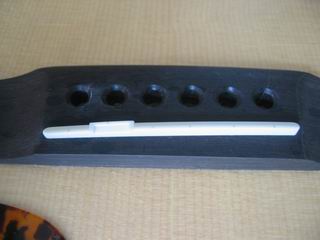
The owner of this Larrivee OM-03R would like to replace the synthetic nut and saddle with bone. The synthetic nut was poorly cut and slotted too deep. What an eyesore. A bone nut and saddle would also be a sonic improvement over the syntheric materials used.
The synthetic nut is removed cleanly from the slot and a new bone nut is shaped from a blank. A rough form is first shaped and taken down to the required dimensions.
The new bone nut is shaped, fitted, notched and polished. Notice the difference between the new bone nut and original synthetic nut.
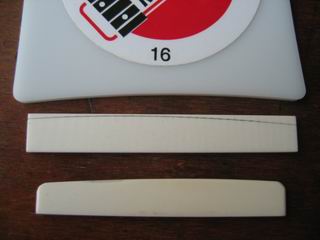
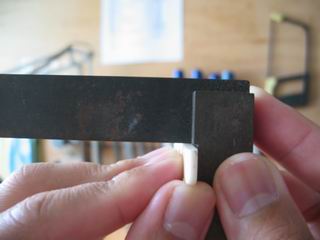
The new bone saddle is shaped to a 16" radius as per the synthetic saddle. The bottom of the bone saddle is carefully sanded flat and perpendicular to the side to improve the contact in the saddle slot. Some people prefer to round the bottom of the saddle but I find a perfectly flat bottom improve tone transference.
The bone saddle is almost completed. All that's left to do it to take it down to it's proper height. Notice the nice rounded edges. The compensation on the synthetic saddle was slightly off and being the perfectionist that I am, I had to correct that issue.
Notice the slight shift in the string contact points between the synthetic and bone saddle. Instead of the wound string sitting along the forward edge of the saddle as per the synthetic saddle, the string contact points been slightly angled backwards from the G string to the low E string to different points along the bone saddle with the low E string contacting the top of the saddle just before the halfway mark. This slight angle is to improve on the intonation of the instrument.
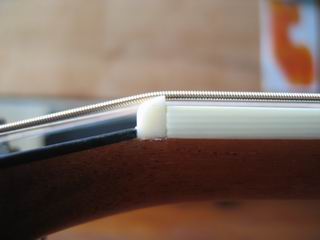
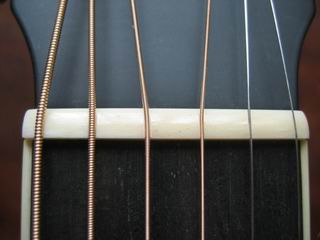
The bone nut is fitted and guitar is strung. Most nuts are slotted equidistant from center to center of the strings. However, as the string gauges increases, the gaps between the strings narrow. I prefer to space the strings equidistant from string to string ala Robert Benedetto. It takes more time and effort but I find this subtle detail help facilitates cleaner playing especially for fingerstyle and your fingers are less cramped when chording. I slot all the nuts this way regardless of the instrument. To date, all my clients have found the spacing more comfortable and none have requested me to space the strings the "conventional" way.
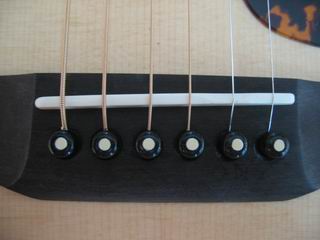
The guitar's strung up and thanks to the slight shift for the wound string, the intonation did improve. I'd earlier angled the G, D, A and low E slots for better compensation.
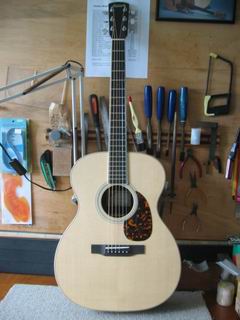
The guitar's all ready to go. With the new bone nut and improved compensated saddle, the guitar has better clarity and sustain. The bass notes has also more definition and depth.
